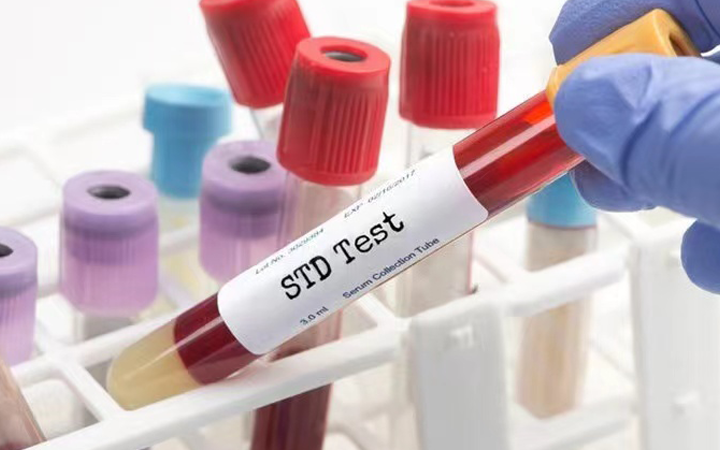HCV Screening and Treatment: Critical for High-Risk Chronic Kidney Disease Patients
Chronic Kidney Disease (CKD) patients are at high risk for Hepatitis C Virus (HCV) infection. Screening and treatment monitoring have become crucial in managing this vulnerable population. As a leader in diagnostic solutions, Sansure Biotech is committed to supporting healthcare providers in addressing this critical health issue.
The Link Between CKD and HCV
CKD is a global health concern, affecting 8-16% of the world’s population and approximately 10.8% of China’s population. CKD patients are particularly susceptible to infections due to compromised immune function, with HCV infection being a significant risk, especially for those undergoing hemodialysis.
Key facts:
– HCV prevalence in hemodialysis patients: 8.7%
– HCV prevalence in general population: 0.4-2.0%
– HCV positive rate in kidney transplant recipients: 6.8%
Conversely, HCV infection can lead to kidney damage, with chronic hepatitis C patients having a 27% higher risk of kidney disease and a 5-fold increased risk of end-stage renal disease (ESRD) compared to the general population.
Screening and Monitoring HCV in CKD Patients
Current laboratory screening and monitoring methods for HCV include:
- Anti-HCV testing (chemiluminescence immunoassay or enzyme-linked immunosorbent assay)
- HCV RNA quantitative detection (fluorescent quantitative PCR)
For CKD patients, especially those on immunosuppressive therapy, HCV RNA quantitative detection is crucial due to potential false-negative anti-HCV results.
According to the “Blood Purification Standard Operating Procedures (2021 Edition)” issued by China’s National Health Commission:
– Hemodialysis patients must be screened for HBV and HCV markers, HIV, and syphilis serology.
– Initial screening is required at dialysis initiation, with follow-up within 3 months.
– Maintenance dialysis patients should be tested every 6 months.
– HCV RNA-positive patients should undergo dialysis in isolation areas.
Treatment and Monitoring of CKD Patients with HCV Infection
The 2018 KIDGO Clinical Guidelines for Hepatitis C in CKD Patients recommend HCV screening for all CKD patients. China’s “Hepatitis C Prevention and Treatment Guidelines (2019 Edition)” states that all HCV RNA-positive patients should receive antiviral treatment, regardless of liver cirrhosis, chronic kidney disease, or extrahepatic manifestations.
Direct-acting antivirals (DAAs) offer dual benefits for CKD patients:
- Improved prognosis for existing CKD patients
- Effective prevention of new CKD cases
HCV RNA quantitative detection should be performed before, during, and after treatment. Sustained virological response (SVR) at 12 or 24 weeks post-treatment indicates HCV cure.
Sansure Biotech’s Commitment to HCV Diagnostics
Sansure Biotech has developed a series of HCV screening and diagnostic reagents, including anti-HCV and HCV RNA tests. Our qualitative and quantitative HCV RNA detection reagents offer sensitivities of 10 IU/mL and 12 IU/mL, respectively. For confirmed HCV patients, we also provide HCV genotyping tests to guide medication selection.
By offering these comprehensive diagnostic solutions, Sansure Biotech is actively supporting the implementation of China’s HCV screening and control strategies, contributing to the global goal of eliminating viral hepatitis as a public health threat by 2030.
As we continue to innovate and improve our diagnostic capabilities, Sansure Biotech remains dedicated to enhancing patient care and supporting healthcare providers in the fight against HCV infection in CKD patients.
Reference
[1] GBD Chronic Kidney Disease Collaboration. Global, regional, and national burden of chronic kidney disease, 1990-2017: a systematic analysis for the Global Burden of Disease Study 2017[J]. Lancet, 2020, 395(10225): 709-733.
[2] Levin A, Tonlli M, Bonventre J, et al. Global kidney health 2017 and beyond: a roadmap for closing gaps in care, research, and policy[J]. Lancet, 2017, 390(10105): 1888-1917.
[3] Zang L, Wang F, Wang L, et al. Prevalence of chronic kidney disease in China: across-sectional survey [J]. Lancet, 2012, 379(9818): 815-822.
[4] Goodkin DA,Bieber B,Jadoul M,et al. Mortality,hospitalization,and quality of life among patients with hepatitis c infection on hemodialysis. Clin J Am Soc Nephrol,2017,12(2):287-297.
[5] Minutolo R, Aghemo A, Chirianni A, et al. Italian Society of Nephrology (SIN); Italian Association for the Study of the Liver (AISF); Italian Society of Infectious and Tropical Disease (SIMIT); Italian Society of Internal Medicine (SIMI). Management of hepatitis C virus infection in patients with chronic kidney disease: position statement of the joint committee of Italian association for the study of the liver (AISF), Italian society of internal medicine (SIMI), Italian society of infectious and tropical disease (SIMIT) and Italian society of nephrology (SIN). Intern Emerg Med. 2018 Dec;13(8):1139-1166. doi: 10.1007/s11739-018-1940-9. Epub 2018 Sep 25. PMID: 30255464.
[6] Park H,Chen C,Wang W,et al. Chronic hepatitis C virus(HCV)increases the risk of chronic kidney disease(CKD)while effective HCV treatment decreases the incidence of CKD. Hepatology,2018,67(2):492-504.





